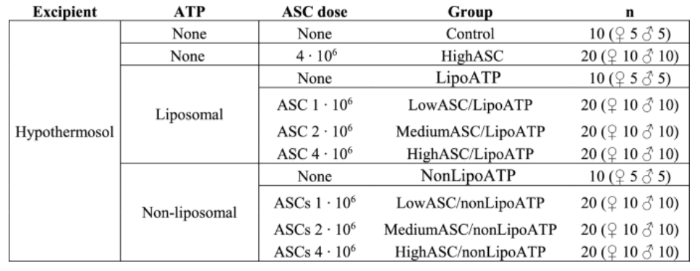I originally added this story about Ideeea Therapeutics (Spain) as an update to my past post on mesenchymal stem cells (MSCs) and hair growth. However, lots of readers missed it, and this company keeps getting widespread global media coverage. So I have now written this separate post on Ideeea Therapeutics. If you made a comment in that post, feel free to re-post it here, and I will then delete it from there.
Ideeea Therapeutics AGAcell: MSCs and ATP
Spain-based start-up Ideeea Therapeutics has raised €2.3 million in seed round funding. The company’s AGAcell ® technology entails the treatment of androgenetic alopecia via the intradermal administration of a patented formulation. This consists of allogeneic mesenchymal stem cells (derived from adipose tissue) combined with a “bioactive molecule”.
The bioactive molecule entails adenosine triphosphate (ATP). The current research was conducted successfully in mice that were treated with various iterations of MSCs and ATP after being induced to lose their hair via the administration of dihydrotestosterone (DHT). Both liposomal and non-liposomal ATP were tested, along with various doses of adipose-derived stem cells (ASCs). The various doses gave different outcomes in male versus female mice, but ultimately, the results were almost always positive:
“The researchers explained that the injection of low-dose stem cells and ATP into male mice resulted in a nearly 100% hair growth effect in three weeks. In female mice, there was no effect at high or low doses, but the hair growth rate reached 90% at medium doses.”
The combination of adipose derived stem cells and adenosine triphosphate regenerates hair via the regenerative capacity provided by the former, and the cellular energy increase provided by the latter. In this study, the authors conclude that:
“ATP supplementation of cell preparations might be a good therapeutic option to enhance the beneficial impacts of MSCs.”

Dr. Eduardo López Bran, the lead scientist for this treatment, was interviewed on June 1 and also covered in this article on June 5. He is the head of the Dermatology Department at the San Carlos Clinical Hospital. He expects that human clinical trials could begin in 2027 or 2028, with an estimated duration of two years. However, the company’s pipeline page indicates that Phase 1 would begin in 2025/2026 and Phase 3 would end around 2030.
Note that in 2024, I covered a Taiwanese company that is working on an AMPK activator product to boost ATP levels of human follicle dermal papilla cells. ATP sprays are often used during hair transplant procedures. And laser hair growth device energy also increases production of ATP.
Also of note, one of the main ways in which Minoxidil works to grow hair is via the opening of ATP-sensitive potassium (KATP) channels.
One of these days, something that works in mice will actually work in people too! That’ll be amazing :-) Thanks for this latest bit of hope. Great news
Well their pipeline shows Release not before 2032. At least they are honest and open.
Out after 2030 if all goes well…we’ll be waiting another 5 years for this one to pan out at least.
Those of us who have followed all these cures all know too well that what happens with mice there is good chance will not translate over to humans. There has to be a better way of testing new theories!
instead of three separate phase trials…there should just be one 1.5-2 year long trial with multiple endpoints for both short term efficacy, safety and longterm safety and efficacy…and at any endpoint if u fail to meet the metrics ur done…next! lets have a conveyor belt system.
@Hugh: A.I. and sophisticated machine language learning models with advanced data sets can do exactly that. The issue is training the models with enough data, not everyone wants to share. Once quantum computing becomes less expensive, you can run millions of simulations of drug trials without touching a human. It’s too expensive now. A quantum computer that can achieve this is about $750M-$1B.
That sounds nice, but the main issue is the model itself, not the compute. We cannot model something we don’t understand. Amount of data and the quality may be part of it, but doubt the current transformer architecture is inherently advanced enough to model these complex pathologies.
Hugh, Agreed. Aging and baldness have been cured in mice over and over. Either they’re not a good analog for humans, or the establishment industries squash these breakthroughs to keep people bald and sick for higher long-term income. That’s just me and my practical conspiracy theories :-)